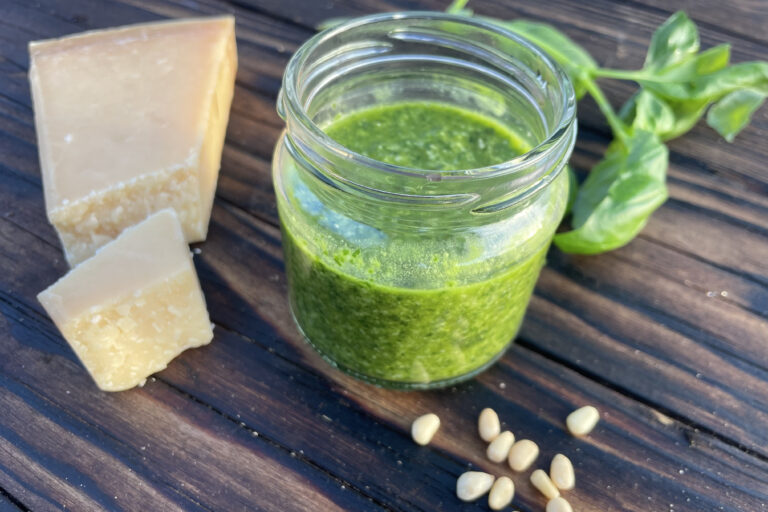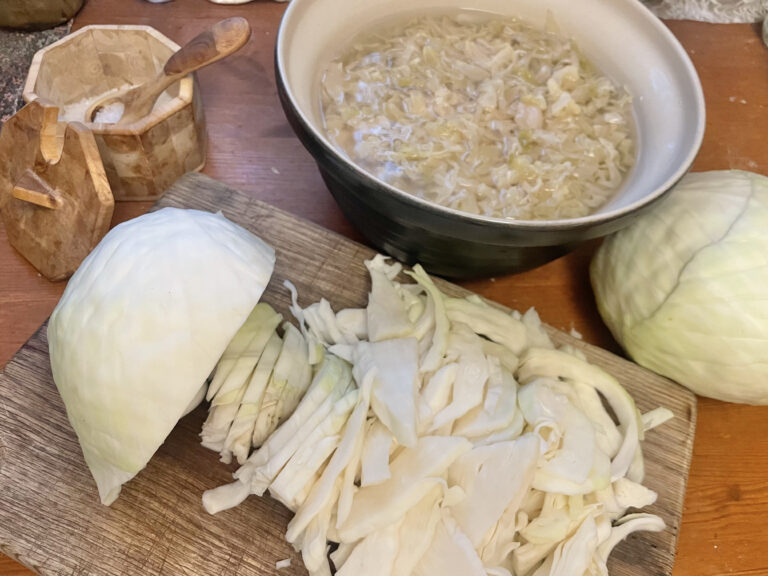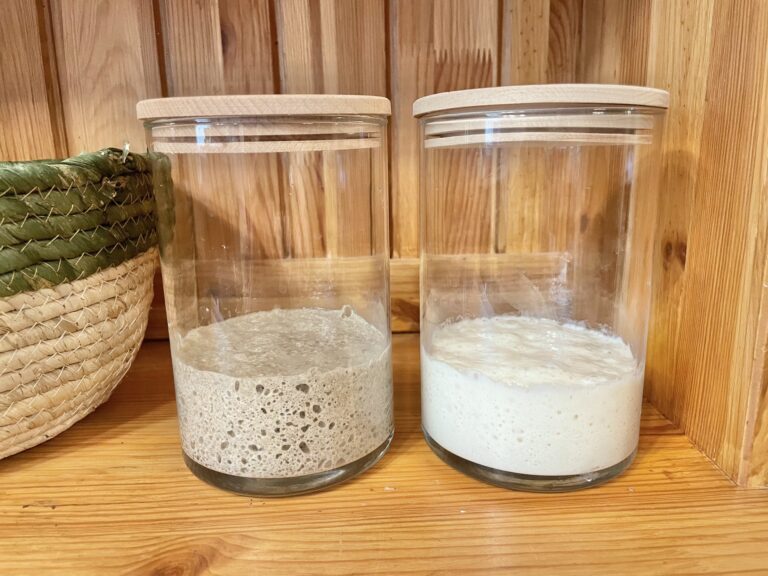Once you make homemade mayonnaise, you’ll likely never want to buy it from the store again. I was never a big fan of mayonnaise and even disliked it, but now I absolutely love homemade mayonnaise and use it with many dishes—it tastes great.

Before starting, come and follow me on Instagram, Facebook, and Pinterest!
In addition to its great taste, homemade mayonnaise offers several other advantages. It’s incredibly quick to make. I mean this in the literal sense: making mayonnaise takes less than two minutes.
It also requires only a few ingredients, all you need to do is blend them with an immersion blender. Plus, you can make it in a large batch right in the jar, where it can be conveniently stored in the refrigerator. Homemade mayonnaise keeps quite well.
Different Flavors of Mayonnaise
The classic mayonnaise flavor comes from mustard. You only need a small amount, but the mayonnaise will be pretty much tasteless if you skip it. Typically, Dijon mustard is used, but you can just as easily use regular mustard.
In addition to (or instead of) mustard, feel free to add other flavors like paprika, curry, or dill. You can customize the homemade mayonnaise to your taste!
Choosing the Right Oil for Mayonnaise
Avoid using seed oils! Seed oils and vegetable oils (all refined oils, in general) are very unhealthy.
Since mayonnaise is mostly oil, choosing the oil carefully is important. The worst oils for your diet are sunflower oil and canola oil (rapeseed oil)—they’re cheap and tempting but not fit for consumption and may even be carcinogenic.
I generally use animal fat or extra virgin olive oil for everyday cooking, the latter being unrefined and not a health risk. Unfortunately, unrefined oils (including avocado oil) have a strong flavor that can ruin the taste of mayonnaise.
Therefore, despite my usual preferences, I make an exception and use refined light olive oil for making mayonnaise. This oil gives the mayonnaise a pleasant taste without the raw oil flavor.
Cold or Warm Ingredients
The ingredients should ideally be at room temperature because it makes it easier to create an emulsion between the oil and the egg. However, you can use cold ingredients from the refrigerator if you’re using an immersion blender. I always use cold ingredients when making mayonnaise.
I recall one time when my mayonnaise didn’t emulsify properly—it was one of the first times I tried making mayonnaise, and I don’t remember exactly what went wrong. However, I remember that all my ingredients were cold from the refrigerator. I let the broken mayonnaise sit at room temperature for a while and then blended it again: the emulsion of oil formed instantly, and the mayonnaise turned out great.
FAQ
Can broken mayonnaise be saved?
Yes, it generally can. If the mayonnaise is too thin, add more egg. If it’s too thick, add more oil. If the emulsion doesn’t form, let the mixture sit at room temperature and then try blending it again.
How do I make mayonnaise without an immersion blender?
You can make it using a food processor, hand mixer or even by whisking it by hand, although this is more difficult. You can find more about making mayonnaise by hand here.
Should I use whole eggs or egg yolks?
You can use only the egg yolk. But I always use a whole egg in my hoemade mayo recipe.
Does homemade mayo taste better than store-bought mayo?
Yes! Much-much better.
Is it safe to use raw eggs?
Use high-quality organic eggs. Pregnant women should be extra careful. The best way is to use the eggs from your own chickens.

Ingredients and Tools Needed to Make Mayonnaise
Check the recipe card at the bottom of the post for ingredient quantities and nutritional information!
Egg (you can also use just the yolk)
Extra light olive oil
Dijon mustard (or regular mustard)
5% Vinegar (I prefer apple cider vinegar)
Salt
Steps for Making Mayonnaise
- Add all the ingredients to a tall container, like a jar, but make sure there’s enough room for the immersion blender to fit.
- Blend thoroughly.
- Your mayonnaise is ready!
Ideas and Tips
- Make the mayonnaise directly in a tall glass jar for convenient storage.
- Start with less mustard and vinegar, you can always add more if needed.
- Feel free to add your favorite flavors and seasonings to the mayonnaise.


How to Make Fail-Proof Mayonnaise With Two Minutes
Once you make homemade mayonnaise, you’ll likely never want to buy it from the store again.
Ingredients
- 1 egg
- 250 ml. of light olive oil (or use unrefined oils)
- salt
- 1 tbsp of (Dijon) mustard
- 1 tbsp of apple cider vinegar
Instructions
- Add all the ingredients to a tall container, like a jar, but make sure there’s enough room for the immersion blender to fit.
- Blend thoroughly.
- Your mayonnaise is ready!
Nutrition Information:
Yield: 1 Serving Size: 1Amount Per Serving: Calories: 2092Total Fat: 233gSaturated Fat: 33gTrans Fat: 0gUnsaturated Fat: 193gCholesterol: 186mgSodium: 658mgCarbohydrates: 1gFiber: 0gSugar: 0gProtein: 6g





